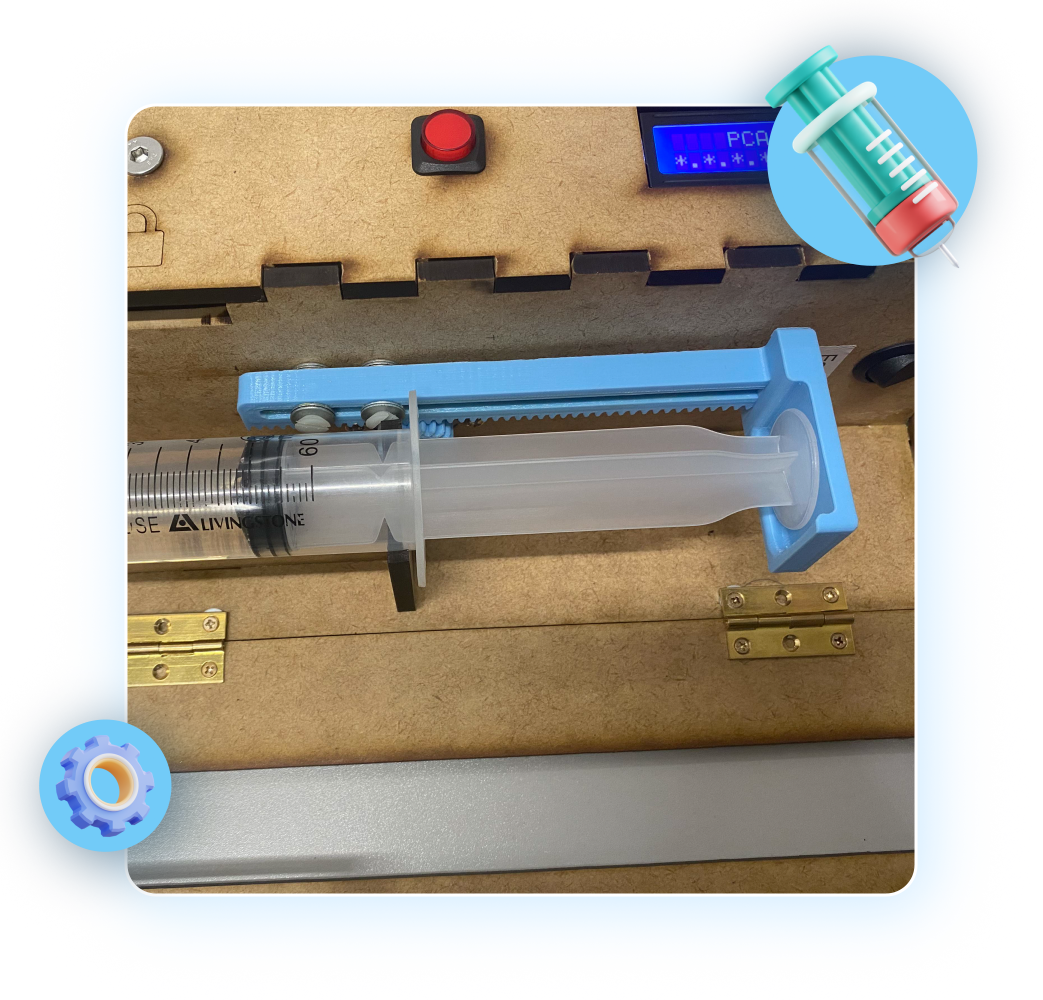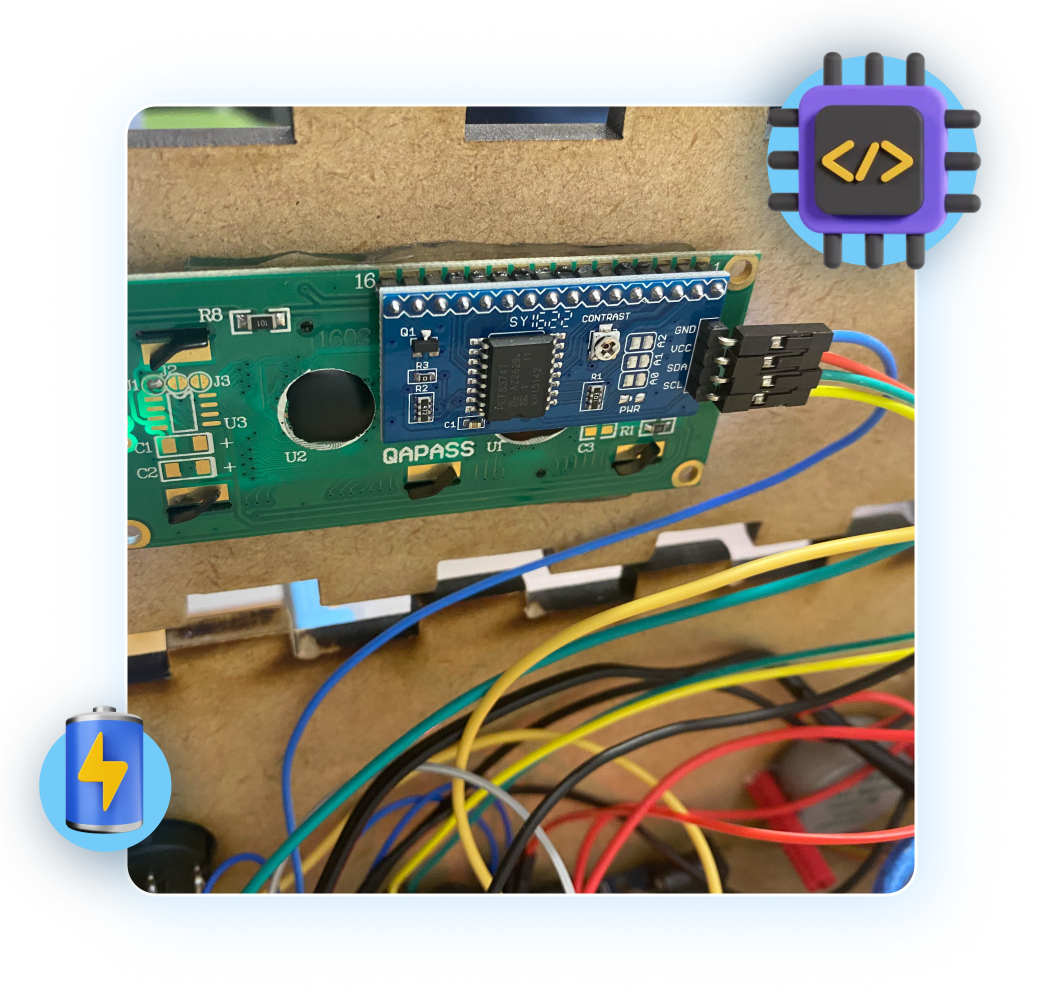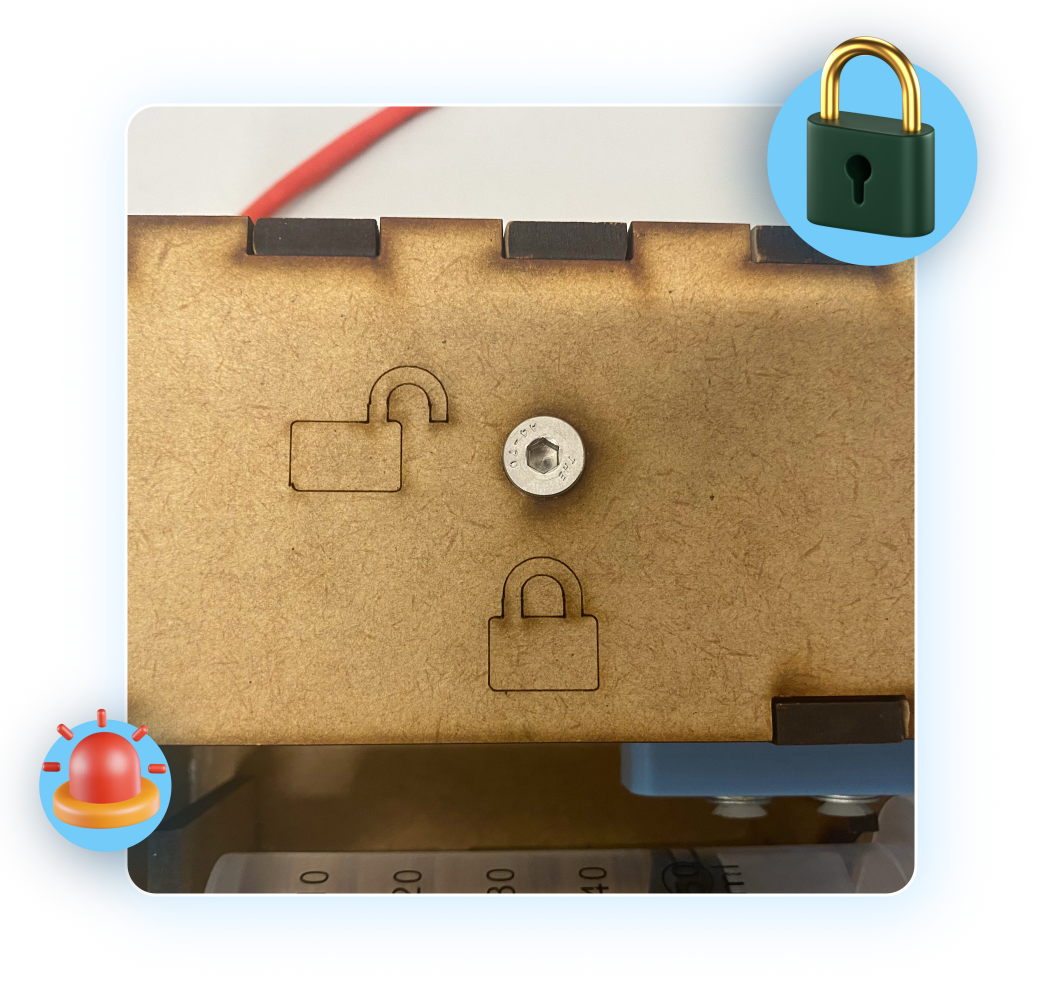Mechanical Design
From the precise outer shell to the rack and pinion mechanism, the pump was designed with meticulous attention to balance protection and function.
Structural Design: The shell was designed in Solidworks using a ‘Box Joint’ method, planned to minimise footprint while ensuring stability and ease of access for maintenance.
Rack and Pinion Mechanism: Developed to drive the syringe plunger. Calculations for the pitch and tooth profile were crucial to ensure smooth, linear motion with minimal backlash.
Locking Mechanism: Implemented to prevent unauthorised access to the syringe featuring a key-operated lock.
 Bilal
Bilal 

